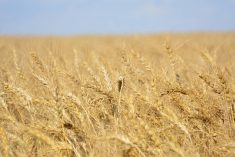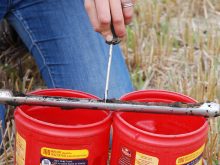Saskatchewan researchers are looking for a way to control coriander flower blight, but first they have to figure out what causes the disease.
Saskatchewan farmers seeded 25,000 acres to coriander last year.
Ray McVicar, Saskatchewan Agriculture’s special crops specialist, expects price and disease will lower that number this year.
He said some farmers lost entire fields of coriander and caraway to coriander flower blight last year.
Two researchers have begun a two-year project to find a control for the disease.
Lorne Duczek, a Saskatoon plant disease consultant and former plant pathologist with Agriculture Canada, and Al Slinkard, professor emeritus with the University of Saskat-chewan’s Crop Development Centre, are co-investigators in the project.
Read Also

AI expected to make itself felt in food systems
Artificial intelligence is already transforming the food we eat, how farmers produce it and how it reaches the consumer, experts say
Duczek said they have lots to learn.
“We know only one thing about coriander blight,” he said.
“It affects the flower, which then does not set seed. It reduces or eliminates yield. It can be devastating … . Samples of affected plants show many different disease-causing organisms but we haven’t been able to pinpoint the cause or causes of this particular disease. So the first step is to discover the cause, then we can look for control procedures.”
Because the disease symptoms “don’t fit well” with a bacterial blight, Duczek suspects it is caused by a fungus. Fungus is also suspected because of the link between the disease and wet weather.
The researchers will be conducting fungicide trials, even though some growers have tried fungicides to no avail.















